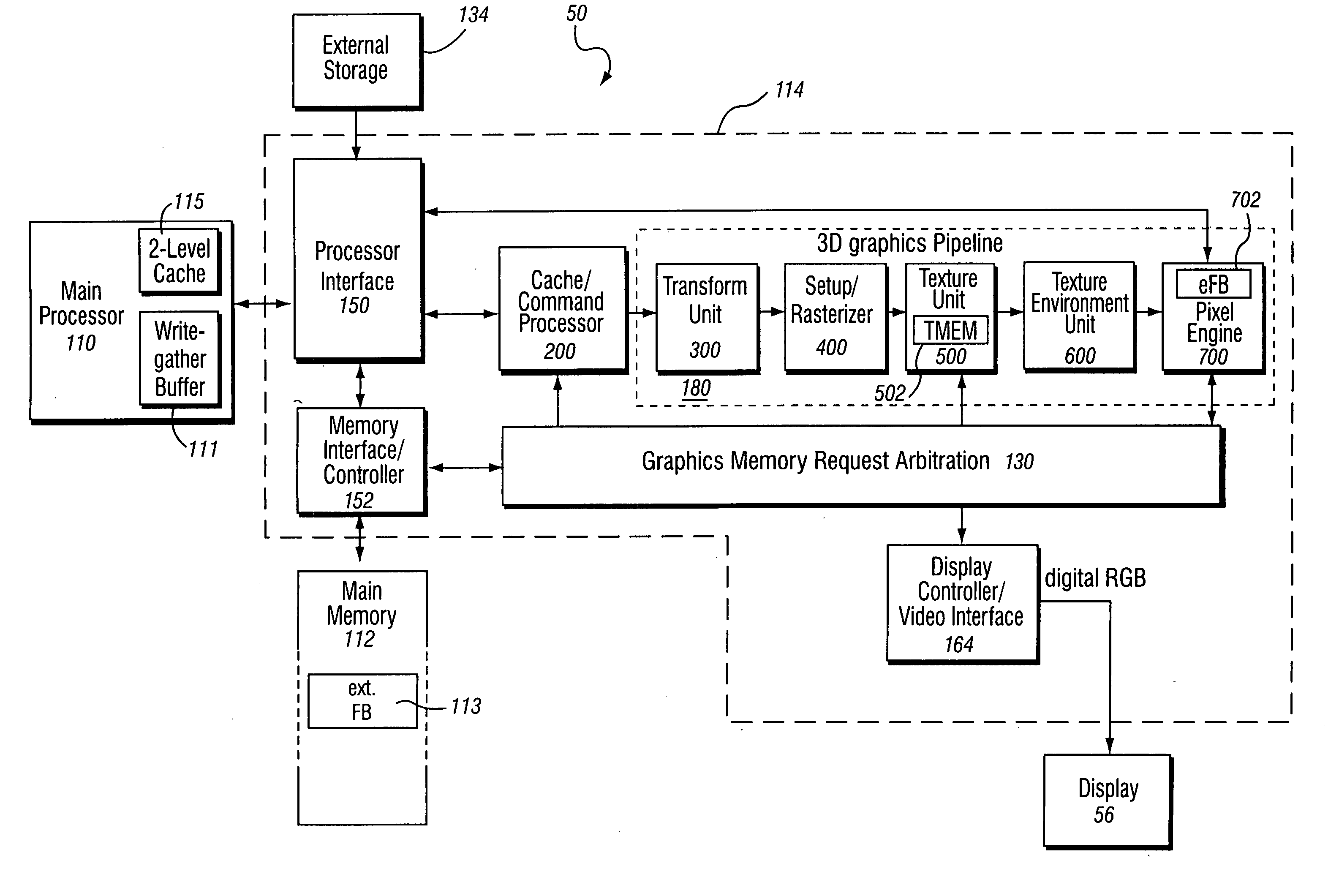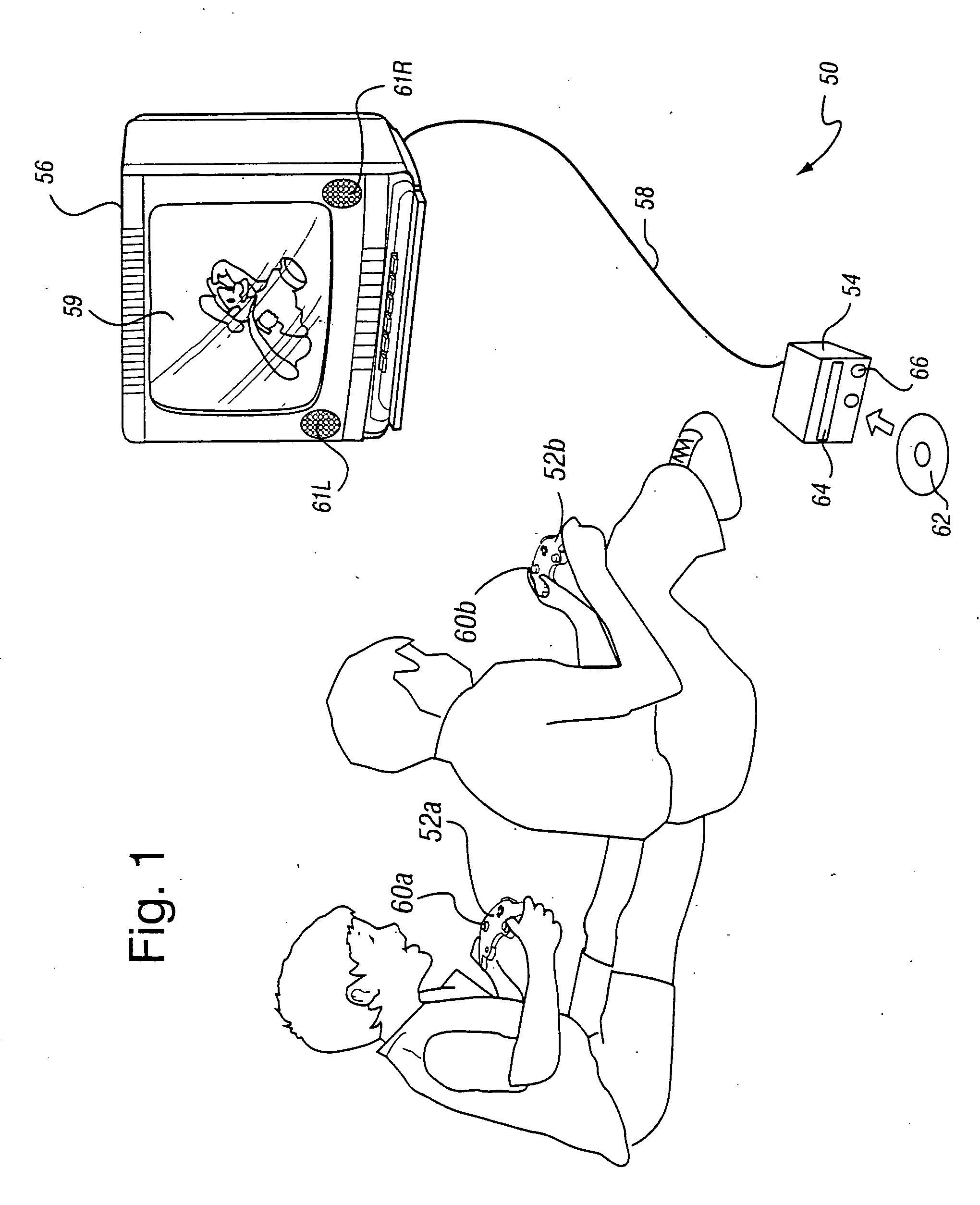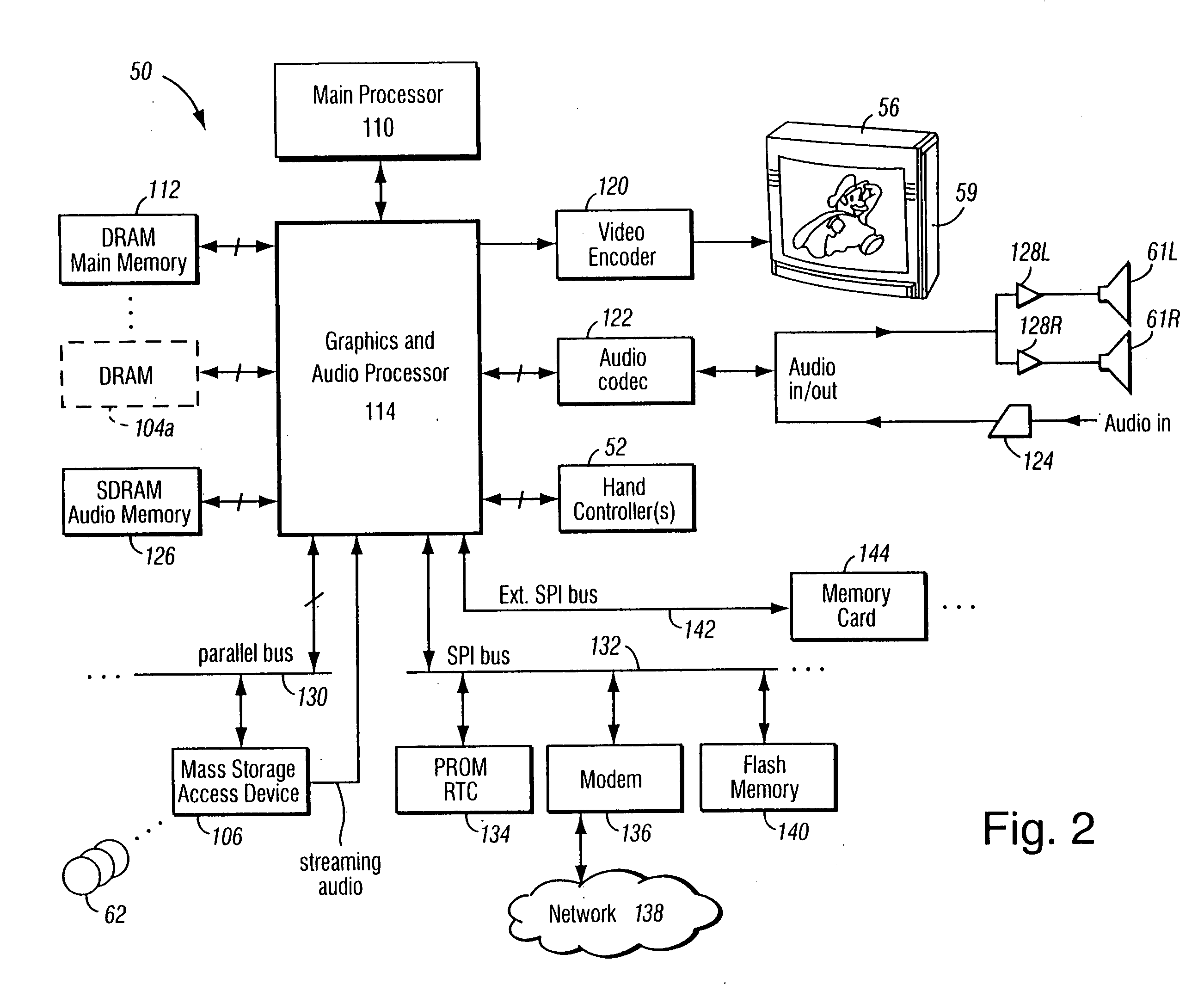Method and apparatus for interleaved processing of direct and indirect texture coordinates in a graphics system
a graphics system and texture technology, applied in the field of interactive graphics systems, can solve the problems of complex computer graphics generation, inability to interact with the computer doing the graphics generation, and high cost of computer-generated three-dimensional graphics a few years ago, so as to reduce yield and reliability, add to the overall production cost of the system, and efficiently implement
- Summary
- Abstract
- Description
- Claims
- Application Information
AI Technical Summary
Benefits of technology
Problems solved by technology
Method used
Image
Examples
example graphics
Pipeline
[0077]FIG. 4 shows a more detailed view of an example 3D graphics processor 154. 3D graphics processor 154 includes, among other things, a command processor 200 and a 3D graphics pipeline 180. Main processor 110 communicates streams of data (e.g., graphics command streams and display lists) to command processor 200. Main processor 110 has a two-level cache 115 to minimize memory latency, and also has a write-gathering buffer 111 for non-cached data streams targeted for the graphics and audio processor 114. The write-gathering buffer 111 collects partial cache lines into full cache lines and sends the data out to the graphics and audio processor 114 one cache line at a time for maximum bus usage.
[0078] Command processor 200 parses display commands received from main processor 110—obtaining any additional data necessary to process the display commands from shared memory 112. The command processor 200 provides a stream of vertex commands to graphics pipeline 180 for 2D and / or ...
example more
Detailed Implementation
[0133]FIG. 11 is a flow chart showing an example set of basic processing steps used to perform indirect texture mapping for an example implementation. Most of the steps of FIG. 11 are set up by a general indirect texturing API (application program interface) function 801 that sets parameters for processing an indirect texture by texture unit 500 and texture environment unit 600.
[0134] System 50 first stores a texture image / data in texture memory 502 for use as an indirect texture (block 800). Based on one or more API command functions (blocks 802-810), commander processor 200 then provides a specified set of indirect texture coordinates to texture retrieval unit 500a (see FIG. 5) which accesses texture memory 504 and retrieves indirect texture lookup data (FIG. 7B block 952). In the example embodiment, one or more API indirect texture function(s) 801 allow a graphics application to set up associations between texture maps and texture coordinates and to specif...
example arguments
[0205] Tev_stage The TEV stage that is being changed.
[0206] Example Usage: [0207] void GXSetTevIndRepeat (GXTevStageID tev_stage)
GXSetAlphaCompare
[0208] This functino sets the parameters for the alpha compare function which uses the alpha output from the last active Texture Environment (TEVk) stage. The number of active TEV stages are specified using GXSetTevStages.
[0209] The output alpha can be used in the blending equation (see GXSetBlendMode) to control how source and destination (frame buffer) pixels are combined.
[0210] The alpha compare operation is:
alpha_pass=(alpha_src (comp0) (ref0) (op) (alpha_src (comp) ref1) [0211] where alpha_src is the alpha from the last active Tev stage. As an example, you can implement these equations:
alpha_pass=(alpha_src>ref0) AND (alpha_src1)
or
alpha_pass=(alpha_src>ref0) OR (alpha_src
[0212] The Z compare may occur either before or after texturing. In the case where Z compare is performed before texturing, the Z is written based only the ...
PUM
 Login to View More
Login to View More Abstract
Description
Claims
Application Information
 Login to View More
Login to View More - R&D
- Intellectual Property
- Life Sciences
- Materials
- Tech Scout
- Unparalleled Data Quality
- Higher Quality Content
- 60% Fewer Hallucinations
Browse by: Latest US Patents, China's latest patents, Technical Efficacy Thesaurus, Application Domain, Technology Topic, Popular Technical Reports.
© 2025 PatSnap. All rights reserved.Legal|Privacy policy|Modern Slavery Act Transparency Statement|Sitemap|About US| Contact US: help@patsnap.com



